| |
|
|
|
|
|
|
|
|
|
|
|
| |
| |
 |
|
| |
田润德
编译
文/图 2020-04-08 20:36 |
|
| |
|
|
|
|
| |
 |
|
|
|
| |
弗朗茨·李斯特(Franz Liszt,1811 —1886) |
|
|
|
| |
|
|
|
|
| |
弗朗茨·李斯特:但丁交响曲
法兰克福广播交响乐团
Franz Liszt - Dante Symphonie Frankfurt Radio Symphony
|
|
|
|
| |
|
|
|
|
| |
音乐历史上的今天
1835年4月8日,“当结尾的乐声响起,我看见李斯特的脸上露出了一种混合着欢愉笑容的痛苦表情,我从来没有在其它任何人脸上看过类似的表情,除了我们的救世主画像.....他的手指在琴键上飞翔,我座位下的地面像丝网般震动,当李斯特的手和身体停止时,观众们仍然被余音所包围;他昏过去了......”——李斯特巴黎演奏会
在匈牙利,1811年11月22日的夜晚,一颗彗星划过天空。一位孕妇看到了闪烁的彗星,随后就生下了一个男婴。彗星的出现仿佛是一个吉祥的预兆,这个男孩后来成了匈牙利著名的作曲家、钢琴家和音乐评论家,他的名字叫弗朗茨·李斯特。李斯特的父亲是公爵家的管家,对音乐非常爱好。从儿子6岁时起,父亲就教他弹钢琴,3年后小李斯特已经崭露才华,经常登台演奏。公爵对李斯特的天才也非常赏识,在他10岁时就资助他到维也纳去跟随名家学习钢琴和作曲。
1823年4月13日,个载入音乐史册的日子,李斯特在维也纳举行了第二次公演,贝多芬出席了这次演出。在这次音乐会上,他又一次演奏了洪梅尔那首难度极大的《b小调钢琴协奏曲》,这次,他弹得比任何时候都更有感情,简直是如醉如痴;演出结束后,音乐厅内响起了阵阵震耳欲聋的掌声,简直就是一片喧嚣的海洋。
忽然,悄无声息,只听到沉重的脚步声向舞台走来,小李斯特感到有人在他跟前弯下身来,深深地搂住了他,亲吻了他的脸颊、额头,原来是贝多芬。李斯特心跳得非常厉害,几乎就要昏倒。这时,传来的已不是掌声,而是电闪雷鸣!
李斯特终生都铭记着这个激动人心的日子,这完全是一种艺术的洗礼,是一种艺术的最高奖赏。从此之后,贝多芬的画像伴随着李斯特的一生,走遍了欧洲各地。
1823年年底,李斯特来到巴黎,一心想进巴黎音乐学院学习,可是当时学院不收外籍学生,而院长凯路比尼虽是一位威望很高的作曲家,却没有胆识破例收取这样杰出的人才。为此,李斯特只好私下向当地的学院教授和剧院指挥学习,从当时巴黎沸腾的文艺生活汲取养料。不久,便开始他的旅行演奏生涯:1824年至1827年间,他在法国和英国各地开演奏会,受到了热烈的欢迎。在此期间,他除了演奏活动获得的巨大成就之外,创作方面也很富有成果——他写了不少钢琴作品和大量钢琴改编曲,大大地扩充了钢琴的应用范围和技术表现的可能性。
1848年,李斯特迁居魏玛,担任魏玛歌剧院指挥。1861年,由于妻子因信奉天主教而迁居罗马,迫使他不得不辞去魏玛的职务,同年年底也来到罗马。自此之后,他的生活发生了很大的变化,时常沉溺于悲观失望的心境之中,他所固有的神秘的宗教性情绪这时占了上风,1865年他穿上僧衣,准备献身宗教,过着隐居式生活。这期间,他写过不少宗教音乐作品。不过即便在所谓“危机时期”,他也没有断绝同“俗世”的接触,欧洲各个角落的音乐家、特别是钢琴家,经常跟踪来他那里。1869年,李斯特又回到魏玛;晚年,他主要生活在魏玛、罗马和布达佩斯三地,但他先前所拥有的那种旺盛的创作毅力却一去不复返了。这时,他积极参加1875年间在布达佩斯创立的音乐学院的建院工作,任该院院长和教授,直到他去世为止;他的学生据统计共有300多人,其中有不少人获得世界性声誉。
1886年,李斯特尽管已经患病在身,还去出席拜罗伊特的音乐节,他看过《帕西法尔》的演出之后,又去观看《特里斯坦与伊索尔德》,但由于体力不支未能终场,肺炎的发作使他在这一年的7月31日丧失了生命。
今日视频:1、法兰克福广播交响乐团演奏李斯特《但丁交响曲》;2、
别列佐夫斯基演奏李斯特《梅菲斯托圆舞曲》;
3、
电影《李斯特》中里赫特扮演的李斯特演奏格林卡《鲁斯兰和柳德米拉》。 |
|
|
|
| |
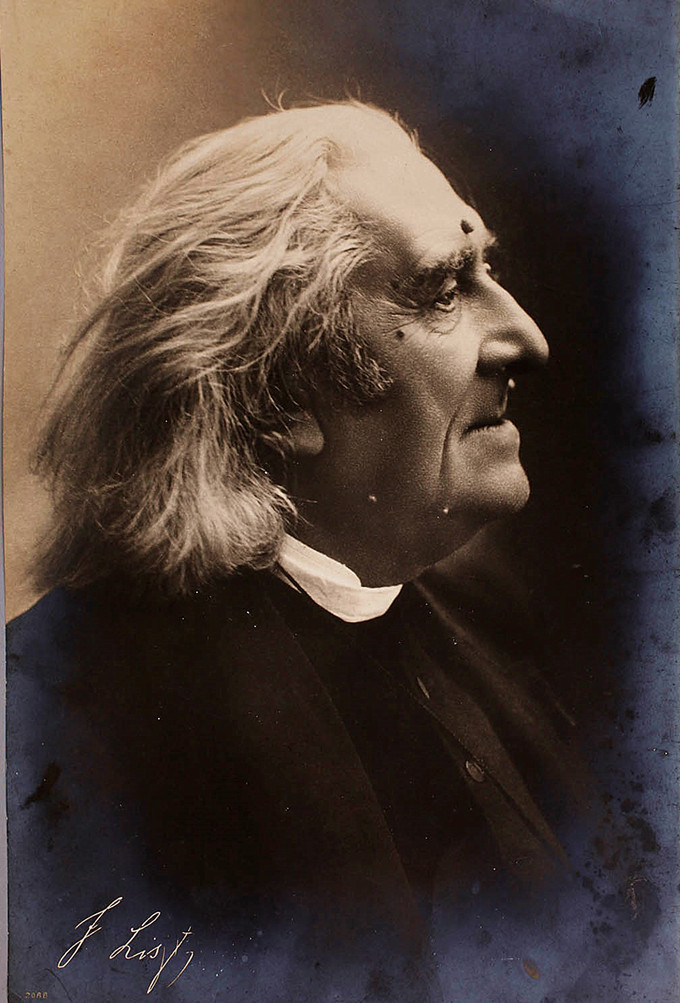 |
|
|
|
| |
弗朗茨·李斯特(Franz Liszt) |
|
|
|
| |
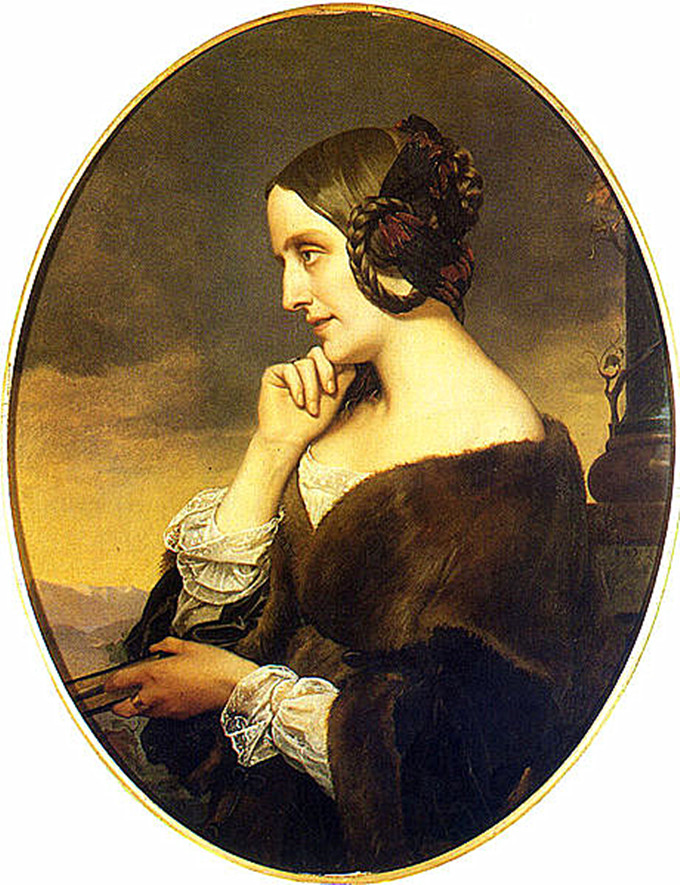 |
|
|
|
| |
玛丽·德阿古特伯爵夫人 |
|
|
|
| |
1833年,李斯特抄写了许多柏辽兹的作品,主要是为了帮助贫穷的柏辽兹。当时,这首交响曲一直是匿名的,也没有发表。李斯特用自己的钱出版了乐谱,为了普及原版乐谱,他多次演奏这首曲子。此外,他还与肖邦建立了永久的友谊,肖邦的浪漫和诗意也受到了他的影响。
同年,李斯特也开始与已婚的玛丽·德阿古特伯爵夫人交往,并成为了他12年的伴侣。1835年,伯爵夫人离开丈夫和家人,前往日内瓦与李斯特会合。这对夫妇于12月18日生下了他们的第一个女儿布兰丁(Blandine),同年她出生在日内瓦。李斯特在日内瓦做了很多事情;他是日内瓦音乐学院的一名教师,他写了一本钢琴技巧手册,甚至还为《音乐公报》写了几篇文章,在这些文章中,他主张艺术家应该从一个卑微的仆人成长为一个受人尊敬的人。 |
|
|
|
| |
In 1833, Liszt
transcribed many of Berlioz’s works, chiefly to help Berlioz who was
poor. At the time, this symphony had remained anonymous as well as not
being published. Liszt used his own funds to publish the transcription,
playing the composition many times in order to popularize the original
music score. In addition, he was forming a lasting friendship with
Chopin, who he influenced with his romantic and poetic side.
In that same year, Liszt also began a relationship with a married woman,
Countess Marie d’Agoult, who became his companion for twelve years. The
Countess ended up leaving her husband and family in 1835, joining Liszt
in Geneva. The couple had their first daughter on December 18, Blandine,
who was born in Geneva that same year. Liszt did a number of things
while in Geneva; he was a teacher at the Geneva Conservatory, he wrote a
piano technique manual, and he even contributed essays to the musical
gazette in which he argued that artists should be raised in the station
from that of a lowly servant to one of respect. |
|
|
|
| |
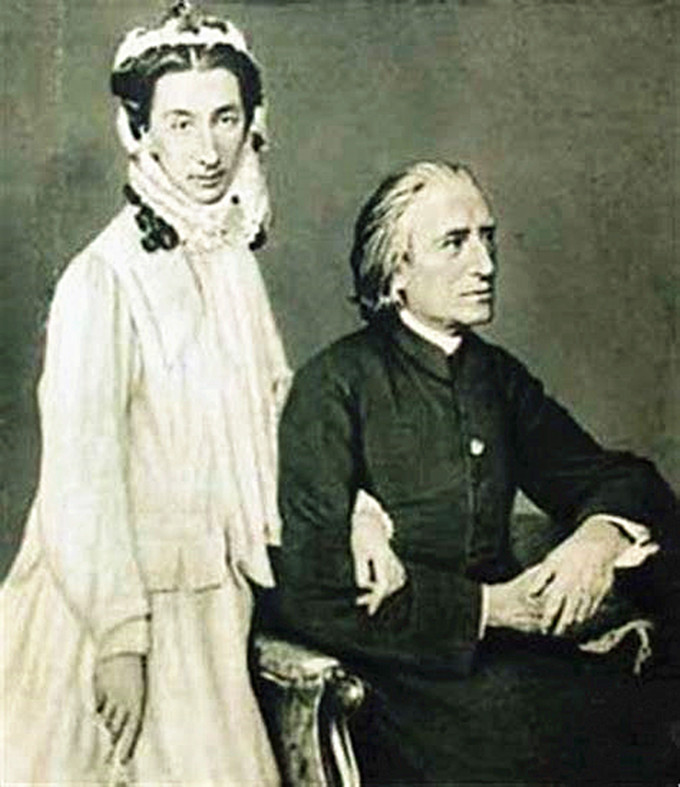 |
|
| |
李斯特和他的女儿柯西玛,李斯特与玛丽亚·古尔达的女儿 |
|
| |
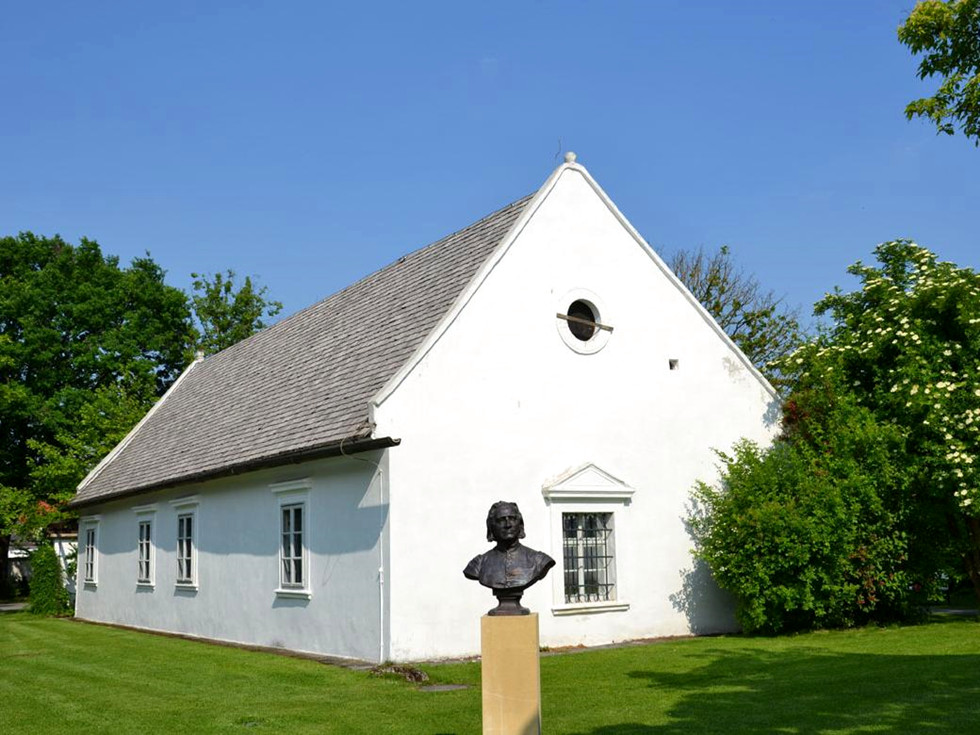 |
|
| |
李斯特家乡——匈牙利雷汀 |
|
|
|
| |
|
|
|
|
| |
Today in the
history of music
April 8, 1835: "as the closing music began, I saw liszt's face take on a
painful expression, mingled with a cheerful smile, which I had never
seen on any other face, save that of our saviour...His fingers flew over
the keys, the ground under my seat shook like a wire mesh, and when
liszt's hands and body stopped, the audience was still surrounded by the
sound;He's unconscious..."-- liszt's Paris concert
In Hungary, a comet streaks across the sky on the night of November 22,
1811.A pregnant woman who saw the flashing comet gave birth to a baby
boy.The comet appeared as an auspicious omen, and the boy became a
famous Hungarian composer, pianist and music critic. His name was Franz
liszt.Liszt's father was the duke's housekeeper and was very fond of
music.From the age of six, his father taught his son to play the piano,
and three years later he had blossomed into a regular performer.The duke
was so impressed by liszt's genius that at the age of ten he sent him to
Vienna to study piano and composition with great masters.
On April 13, 1823, a date in the annals of music, liszt held his second
public performance in Vienna, in which Beethoven was present.At this
concert he again performed hummel's difficult piano concerto in b minor,
and this time he played with more feeling than ever before.After the
performance, there was deafening applause in the concert hall. It was a
sea of noise.
Suddenly, in silence, heavy footsteps were heard coming towards the
stage. Little liszt felt someone bending down in front of him, put his
arms around him, and kissed him on the cheek and forehead. It was
Beethoven.Liszt's heart beat so hard that he almost passed out.At this
time, came not applause, but thunder and lightning!
Liszt remembered this exciting day for the rest of his life. It was a
baptism of art, the highest reward of art.From then on, Beethoven's
portrait accompanied liszt throughout Europe.
At the end of 1823, liszt came to Paris with the intention of studying
at the Paris conservatory of music, but the school did not accept
foreign students, and its director, carroubini, though a highly
respected composer, was not bold enough to make an exception for such
outstanding talent.To this end, liszt had to learn privately from the
local college professors and theater directors, from the lively literary
life of Paris.It was not long before he began his travelling career:
between 1824 and 1827 he gave concerts all over France and England, to
rapturous applause.During this period, in addition to his great
achievements in performance activities, he was also very fruitful in
creation -- he wrote many piano works and a large number of piano
adaptations, which greatly expanded the scope of piano application and
the possibility of technical performance.
In 1848, liszt moved to weimar to take command of the weimar opera
house.In 1861, his wife moved to Rome because of her Catholicism,
forcing him to resign his post in weimar and come to Rome at the end of
the year.Since then, his life has changed a lot, often indulging in a
mood of pessimism, his inherent mystical religious feelings now prevail,
and in 1865 he put on his monk's robes, prepared to dedicate himself to
religion and live a reclusive life.During this time, he wrote a lot of
religious music.But even in times of crisis, he never lost touch with
the world. Musicians, especially pianists, often followed him from all
over Europe.In 1869, liszt returned to weimar;In his later years, he
lived mainly in weimar, Rome and Budapest, but the exuberant creative
will he once possessed was gone.At this time, he actively participated
in the establishment of the conservatory, founded in Budapest in 1875,
and served as its President and professor until his death.He has more
than 300 students, many of whom have won worldwide fame.
In 1886, although liszt had been ill, also went to attend the bayreuth
music festival, he saw "Parsifal" after the performance, and to see
"Tristan and isolde", but due to physical exhaustion did not end, the
outbreak of pneumonia to make him in this year on July 31 lost his life.
Today's video: 1. Liszt's Dante symphony performed by the Frankfurt
broadcasting symphony orchestra; 2.2. Berezovsky playing liszt's
"mephaisto waltz";3. Liszt, played by Richter in the movie liszt, plays
glinka ruslan and lyudmila. |
|
|
|
| |
|
|
|
|
| |
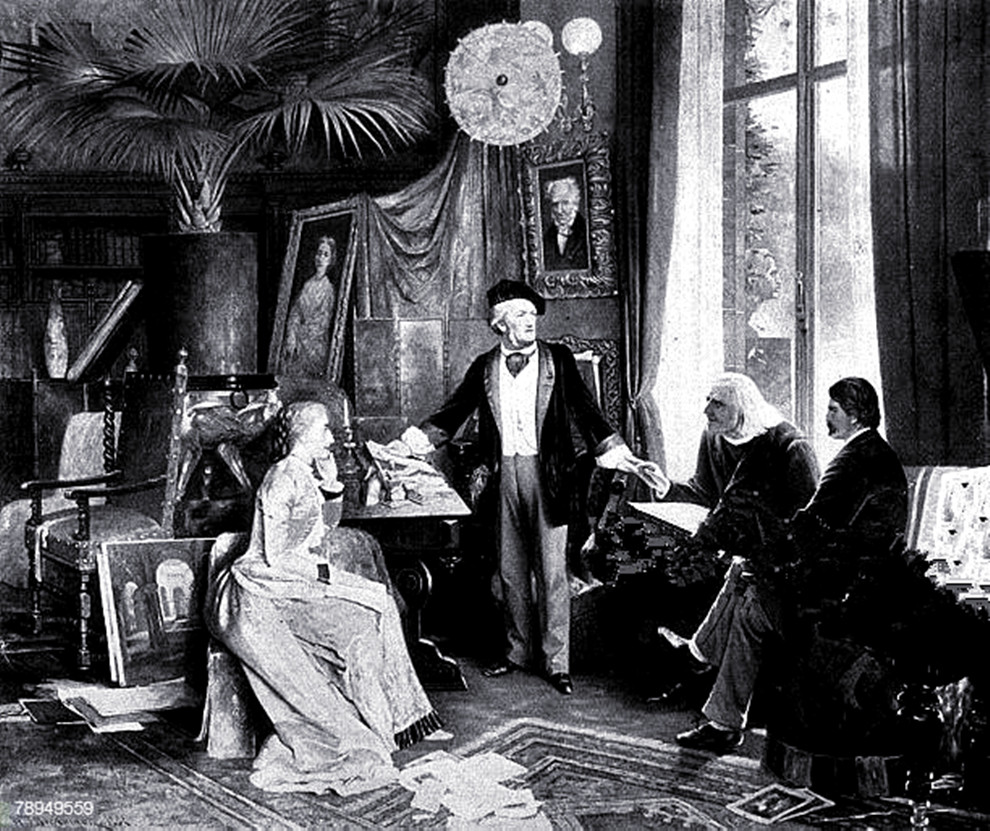 |
|
| |
李斯特和女儿柯西玛、女婿——瓦格纳
。 |
|
|
|
| |
|
|
|
|
| |
《但丁》交响曲,S.109 |
|
|
|
| |
但丁是14世纪意大利的著名诗人和欧洲文艺复兴的伟大先驱。他的长诗《神曲》,通过作者在地狱、界禾口天堂的幻游,反映了当时政治与社会的现实。
1848年前后,李斯特受到这首长诗的启发,开始构思交响乐《但丁》。这部作品最终完成于1856年,作者把它题献给自己的女婿瓦格纳。
李斯特的《但丁》交响曲由《地狱》、《净界》、《神曲》三部分组成。
第一乐章,地狱。但丁想像中的地狱,形似一个大漏斗,漏斗内壁有9层圆环,直达地心,漏斗的口子位于北半球,罪人的灵魂是按其罪恶大小而确定所处圆环的深度的。但丁在罗马诗人维其略的灵魂陪伴下,来到这幽冥之国的大门,这门上赫然铭刻着以下黑沉沉的字句:“从我这里走进苦恼之城,从我这里走进罪恶之渊,从我这里走进幽灵队里……”这就是乐章一开始的音乐描写——长号和大号用雷鸣般逼人的朗诵调乐句,在阴森的定音鼓滚奏猛烈冲击的伴随下,直接把听者也引到这地狱的门口。
这就是所谓绝望的动机,它是全乐章的主要节奏型,在这一乐章中还将以不同的姿态禾口力度多次出现,似乎随时都在强调这地狱中没有爱怜,没有休息,也没有安慰,在这里是不能存有任何希望的。接在这永恒咒语的宣告之后,大鼓的激烈敲击与弦乐器上呻吟的半音阶动机,把音乐从这威严的引子带入描绘地狱的骚乱景象的基本段落。音乐在这时转为热狂酌快板,这里有众多不平常的结合,大量的半音阶乐句,刺耳的不协和音,
令人不寒而栗的节奏,罕见的粗野的乐段,猛烈的冲势,以及古怪的喊叫一管弦乐队拥有的所有这些能耐,全都用来体现原诗中使但丁毛发悚然的那种景象:“这里叹息声,抱怨声,悲啼声,在没有星光的空气里面应和着。千奇百怪的语音,痛苦的叫喊,可怕的怒骂,高呼或暗泣,拍手或顿足,空气里骚扰不已,永无静寂,好比风卷尘沙,遮天蔽日。”
过不多久,当绝望的动机在小号和长号声部重现之后,情趣突然有变化:地狱的狂风渐渐静息下来,在骚乱与喧嚣之中,出现了片刻的平静。现在,但丁来到惩罚色欲场中的灵魂的第二层地狱,他止住了脚步,要求维其略让他同“两个合在一起的灵魂说几句话”。于是,像鸽子应声张翼归巢一样,两个灵魂在竖琴的叮咚乐声和长笛与小提琴的优美音型伴奏下,脱离那险恶的风波飞向前来,这就是李斯特从地狱众多场面中特意挑选出来的里米尼的弗兰切斯卡和保罗。弗兰切斯卡回答但丁的问话时说:“在不幸之日,回忆欢乐之时,是再大不过的痛苦。”这句话李斯特用低音单簧管、单簧管和英国管的宣抒调反复陈述,同时还把原诗记写在英国管声部上。接着,大提琴的一大段独奏,把音乐引入充满爱情的行板,弗兰切斯卡继续叙述保罗怎样替他哥哥代行婚礼,但就此却弄假成真,同她缔结私情,最后两人双双被杀的故事。她含泪诉说这无限的爱惰以及在地狱中所蒙受的无尽苦难,她的一席话使但丁感动得“竟然昏倒在地,好像断了气一般”。
然而,从那痛苦的啜泣中,听者才刚刚领略到一点青春与美的无法抗拒的魅力,那绝望的动机又响起来了;表面看来,这动机所拥有的那种威势虽然有所和缓,骨子里却显得更加可畏——从道义的观点着眼,这倒是意味深长的。接着,竖琴的一个华彩乐句又从深渊唤回了那意外的喧嚣,这里还特别强调模仿魔鬼的狞笑声幽灵的可怖啸叫被淹没在怪异的和声之中,乐章基本主题再度掀起的骚乱,最后还由于绝望主题的重现而加剧。这一乐章的音乐确实可以同但丁的出色描绘相匹敌。 |
|
|
|
| |
Dante
symphony, s. 109
Dante was a famous Italian poet in the 14th century and a great
pioneer of the Renaissance in Europe.His long poem "divine
comedy" reflected the political and social reality of that time
through the author's fantasy tour in the hell and the heaven of
jiehekou.
Around 1848, liszt was inspired by this long poem and began to
conceive the symphonic Dante.The work was finally completed in
1856 and dedicated to his son-in-law, Wagner.
Liszt's "Dante" symphony consists of "inferno", "the clear
world" and "divine comedy".
The first movement, hell.The inferno in Dante's imagination is
shaped like a big funnel, with nine rings on the inside of the
funnel reaching to the center of the earth. The opening of the
funnel is located in the northern hemisphere, and the soul of
the sinner is determined by the depth of the ring according to
the size of its sin.Dante, accompanied by the spirit of the
Roman poet vicilio, arrives at the gates of this dark land, on
which the following dark words are etched: "from me into the
city of distress, from me into the abyss of sin, from me into
the band of ghosts..."This is the musical description at the
beginning of the movement -- the trombone and tuba, with their
thunderous recitation of key phrases, accompanied by the fierce
impact of the gloomy timpani roll, lead the listener directly to
the gates of this hell.
This is the motive of despair; it is the chief rhythmic form of
the whole movement, and it will appear many times in this
movement with varying degrees of intensity, as if all the time
emphasizing that there is no love, no rest, no comfort in this
hell, and that there can be no hope here.Following the
announcement of this eternal spell, the fierce beating of the
drum and the chromatic motive of the moaning on the stringed
instruments carry the music from this majestic introduction to
the basic passage depicting the turbulent scene of hell.At this
point the music turns into a feverish allegro, where there are
many unusual combinations, many chromatic phrases, harsh
dissonance,
The chilling rhythms, the rare brutish passages, the violent
rush, and the strange cries -- all the power of the orchestra --
were used to reflect the vision of the original poem that made
Dante's hair shudder: "here sighs, laments, laments, echoing in
the starless air.Strange voices, cries of pain, terrible curses,
shouts or dark sobs, clapping of hands or stamping of feet, the
air is troubled, the air is never silent, like the wind blowing
dust and sand, blocking the sun."
Soon after, when the motive of despair had returned to the
trumpet and trombone, there was a sudden change of taste: the
wind of hell died down, and there was a moment of calm amid the
tumult and tumult.Now, Dante has come to the second level of
hell to punish the souls in the field of lust, and he stops and
asks vicellius to let him have "a few words with two souls
together."Then, like a dove, the two souls, accompanied by the
tinkling of a harp and the melodious shapes of a flute and a
violin, flew forward from that sinister storm, and this was
Franz and Paul of riminius, whom liszt had chosen out of the
many scenes of hell.Francesca replied to Dante's question:
"there is no greater pain than in the day of adversity, in the
remembrance of joy."Liszt repeated these words in the clarinet,
clarinet and English clarinet, and wrote the original poem on
the English part.Then a long solo on the cello brings the music
to the love-filled andante, and Francesca goes on to tell the
story of how Paul married his brother, only to have an affair
with her and to have them both killed.She teared up about this
boundless laziness and the endless suffering she had suffered in
hell, and her words moved Dante "to the point of fainting on the
ground as if he were dead".
Yet, from that bitter SOB, the hearers had only just begun to
appreciate the irresistible charms of youth and beauty, when the
desperate motive rang forth again;On the face of it, the
grandeur of the motive, though mild, was more terrible in its
essence -- and that was significant from a moral point of
view.Then, from the abyss, a cadence of the harp calls back the
unexpected noise, and here there is a special emphasis on the
imitation of the devil's grimaces. The ghastly roar of the
phantom is drowned in a grotesque harmony.The music of this
movement can indeed rival Dante's excellent depiction. |
|
|
|
| |
|
|
|
|
| |
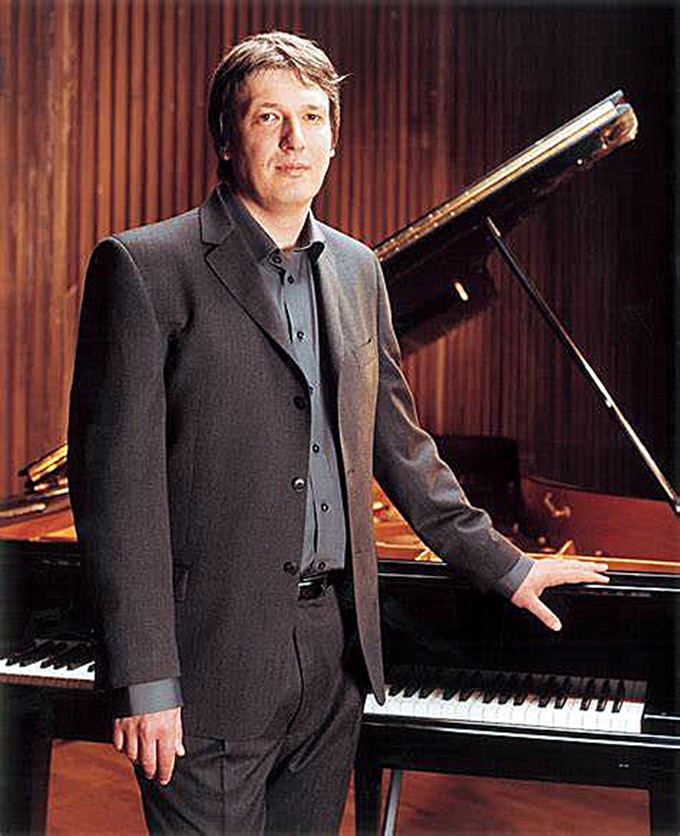 |
|
|
|
| |
鲍瑞斯·别列佐夫斯基(Boris berezovsky) |
|
|
|
| |
鲍瑞斯·别列佐夫斯基生于莫斯科,后来在莫斯科国立音乐学院跟随伊丽莎白·韦尔扎拉兹学习,并私下拜亚里山德·萨茨为师。1988年在魏格摩尔音乐厅举办的独奏音乐会是他在伦敦的首场演出。伦敦《泰晤士报》形容他是“一位前途无量的艺术家,一位有着令人炫目的技巧和巨大能量的钢琴家”。两年后,他在1990年的国际柴科夫斯基比赛上摘得金奖。 |
|
|
|
| |
Boris berezovsky was born in Moscow, and later studied at the
Moscow state conservatory under Elisabeth verzalatz, where he
was privately taught by alexande sartz.He made his London debut
with a recital at wigmore hall in 1988.The Times of London
described him as "a promising artist, a pianist with dazzling
skills and tremendous energy".Two years later, he won the gold
medal in the 1990 international Tchaikovsky competition. |
|
|
|
| |
|
|
|
|
| |
《梅菲斯特圆舞曲》是李斯特四首标题相同的钢琴曲中的第一首,作于1860年,取材于他最喜欢的一部文学作品——歌德的《浮士德》(这部作品曾经给他这部作品以及他其它作品很多灵感),但是这首音乐基于尼古拉·策瑙富有诗意的一个场景。副标题为《乡村酒馆中的舞曲》,这个故事详细地写在李斯特的乐谱上,简要如下:浮士德和梅菲斯特进入了一家乡村酒馆,当时那里正在进行婚礼。浮士德被有一双黑眼睛的美人迷住,梅菲斯特抓过一把小提琴演奏。舞者沉醉在这魔鬼般的音乐中,这婚礼集会成了狂饮闹宴,疯狂的舞者跌倒在草地上,作曲家以双音的颤音表现了梅菲斯特回荡在空中那不断的笑声。最后,夜莺的歌声唱起,强烈的欲望将他们击垮,他们被淹没在像大海一样的汹涌翻腾的感情之中。
李斯特最初是为交响乐队创作的这部作品,后来又将其改编为钢琴独奏和钢琴二重奏。《梅菲斯特》舞曲是一个很壮丽的表演作品;他给演奏者提出了魔鬼般的技术挑战,几乎没有哪部作品像它一样在短短几分钟内展示了如此丰富和令人耀眼眩目出色的演奏技术。 |
|
|
|
| |
The murph's waltz "is the first of four has the same title
as liszt piano, as in 1860, originated from a literary works of
his favorite -- Goethe's" Faust "(this work was to give him the
works and his other works a lot of inspiration), but this piece
of music based on nicolas nao a poetic scene.Subtitled "dance
music in a country tavern," the story is written in detail on
liszt's sheet music, and is summarized as follows: Faust and
mephiste entered a country tavern where the wedding was taking
place.Faust was bewitched by the beauty with the black eyes, and
mephiste grabbed a violin and played.The dancers revel in the
devilish music, the wedding party turns into a drinking frenzy,
the crazy dancers fall on the grass, and the composer's two-tone
trill shows mephist's incessant laughter in the air.At last the
nightingale sang, and the strong desire of the nightingale
overwhelmed them, and they were drowned in a sea of emotions. |
|
|
|
| |
|
|
|
|
| |
李斯特:梅菲斯托圆舞曲-别列佐夫斯基
|
|
|
|
| |
|
|
|
|
| |
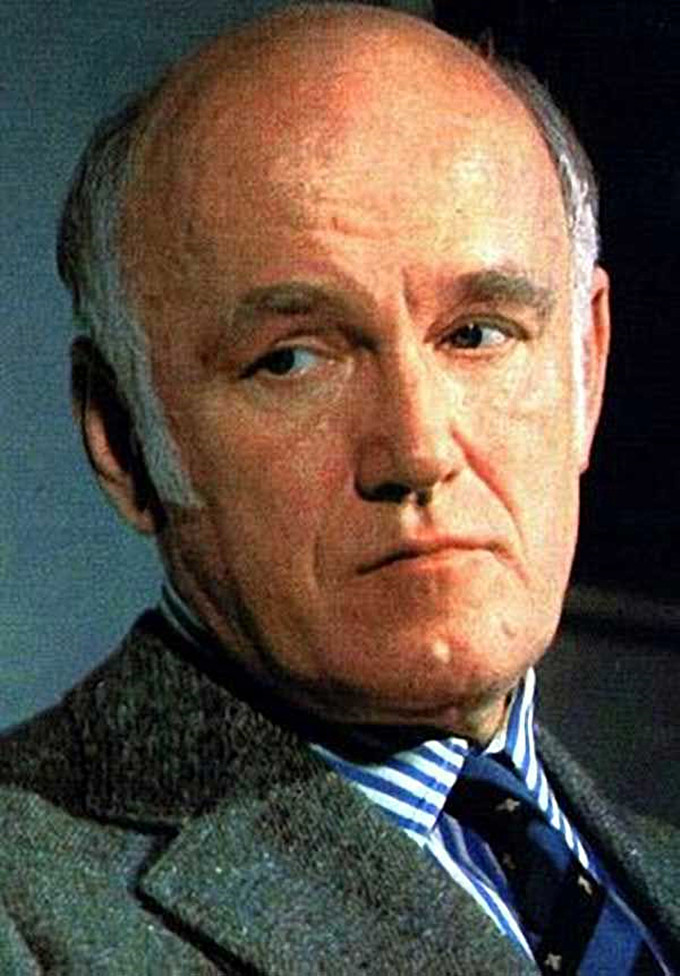 |
|
|
|
| |
斯维亚托斯拉夫·里赫特(Святослав
Рихтер) |
|
|
|
| |
斯维亚托斯拉夫·里赫特(Святослав
Рихтер,1915年3月20日~1997年8月1日),出生于日托米尔,钢琴演奏家。
他以极广的演奏范围,举重若轻的技术以及富有诗意的分句闻名,他的演奏曲目如同百科百书一样广,不管是视谱或背谱演出,都能弹出杰出且深刻的音符,令人赞赏的演奏技巧,与对各个作品深邃且独特的了解。
里赫特演奏技术游刃有余,演奏起来得心应手,并有富于弹性和诗意的分句,以及清楚的内部和层次结构。他的演奏曲目很广,并是一个很内在的音乐家。在演奏19世纪浪漫派作曲家的作品,特别是舒柏特与舒曼的作品达到了完美的诗意境界;而他演奏的德彪西和拉威尔的作品,有给人以无比细致的感觉。同时他也是一个出色的室内乐钢琴家,曾在萨尔斯堡音乐节与布里顿和罗斯特罗波维奇联合演出。他录制的李斯特钢琴作品至今仍脍炙人口。
里赫特演奏技术游刃有余,演奏起来得心应手,并有富于弹性和诗意的分句,以及清楚的内部和层次结构。他的演奏曲目很广,并是一个很内在的音乐家。在演奏19世纪浪漫派作曲家的作品,特别是舒柏特与舒曼的作品达到了完美的诗意境界;而他演奏的德彪西和拉威尔的作品,有给人以无比细致的感觉。同时他也是一个出色的室内乐钢琴家,曾在萨尔斯堡音乐节与布里顿和罗斯特罗波维奇联合演出。他录制的李斯特钢琴作品至今仍脍炙人口。
擅长演奏巴赫,贝多芬,舒伯特,海顿,肖邦,李斯特,拉赫曼尼诺夫,普罗柯菲耶夫,肖斯塔科维奇等作曲家的曲目。
他喜于现场演奏,因此有着大量数不清的现场演奏记录,不论是正式或非正式,每年仍有大量的录音出土,可说是生前死后都引领风骚的一代大家。 |
|
|
|
| |
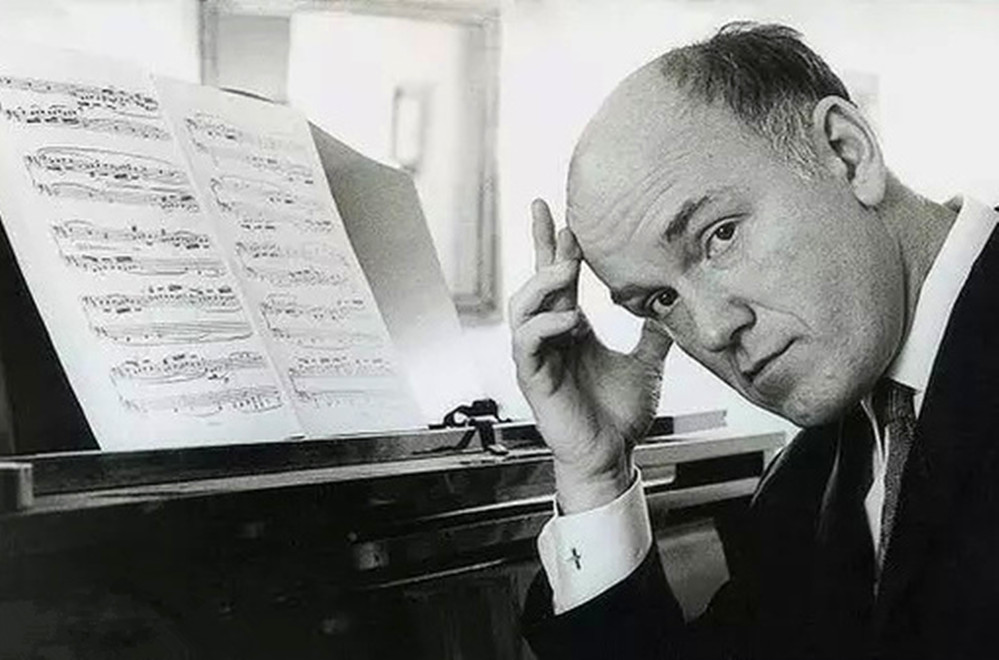 |
|
| |
斯维亚托斯拉夫·里赫特(Святослав
Рихтер) |
|
|
|
| |
Olivia Joe Slavic, hutt (С kind guide second т о с л а kind
guide Р и х т е р, March 20, 1915 to August 1, 1997), born in
day care mir, pianist.
He is known for his wide range of performances, lightweight
techniques and poetic clauses. His repertoire is as broad as a
hundred encyclopedic books. Whether performed by visual notation
or back-notation, he can play outstanding and profound notes,
his playing skills are admirable, and he has a profound and
unique understanding of each work.
Richter plays with skill and ease, with elastic and poetic
phrasing and a clear interior and hierarchy.He has a wide
repertoire and is an inner musician.In performing the works of
romantic composers in the 19th century, especially shubert and
Schumann's works reached a perfect poetic state;And the Debussy
and Ravel pieces that he played, there was an incredible sense
of detail.He was also an outstanding chamber pianist, performing
at the Salzburg Festival with Britten and Rostropovich.His
recordings of Liszt piano are still very popular today.
Richter plays with skill and ease, with elastic and poetic
phrasing and a clear interior and hierarchy.He has a wide
repertoire and is an inner musician.In performing the works of
romantic composers in the 19th century, especially shubert and
Schumann's works reached a perfect poetic state;And the Debussy
and Ravel pieces that he played, there was an incredible sense
of detail.He was also an outstanding chamber pianist, performing
at the Salzburg Festival with Britten and Rostropovich.His
recordings of Liszt piano are still very popular today.
He is good at playing pieces by Bach, Beethoven, Schubert,
Haydn, Chopin, Liszt, Rachmaninoff, Prokofiev, Shostakovich and
other composers.
He was fond of live performance, so there are numerous records
of live performance. Whether formal or informal, a large number
of recordings are still unearthed every year, which can be said
to be the leading generation in life and death. |
|
|
|
| |
|
|
|
|
| |
|
|
|
|
| |
里赫特扮演的李斯特演奏格林卡
|
|
|
|
| |
演奏作品为《鲁斯兰和柳德米拉》中的Chernomor's March
|
|
|
|
| |
|
|
|
|
| |
未得原作者编者授权严禁转载www.mt77.com任何内容 |
|
|
|
|
|
|
|
|
|
|
|
|
|
|


